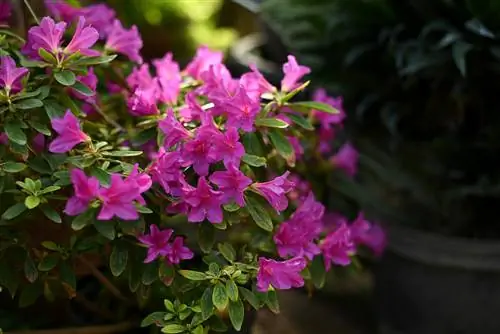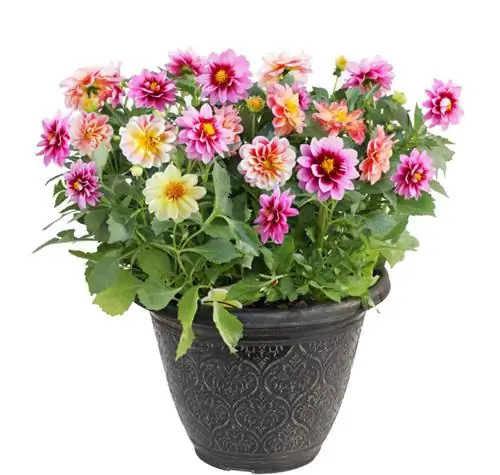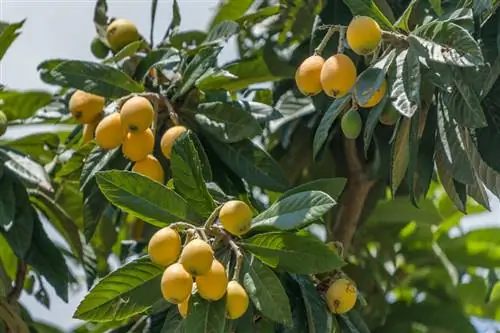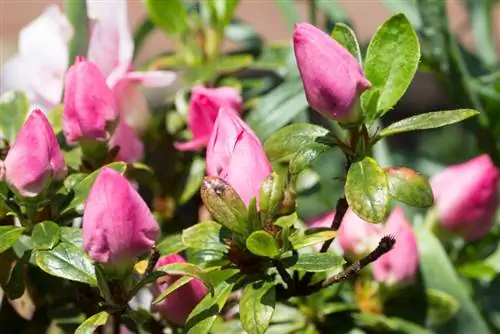- Author admin [email protected].
- Public 2023-12-16 16:46.
- Last modified 2025-01-23 11:22.
Japanese azaleas can be found in many gardens, rock gardens and parks due to their impressive flowers. But not everyone has a large garden with enough space. Here you will find all the important information about keeping and caring for Japanese azaleas in pots or buckets.
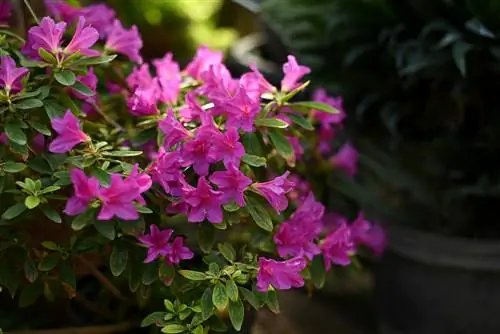
Can you keep Japanese azalea in a pot?
Japanese azaleas thrive in containers or pots as long as they are planted in acidic rhododendron soil and given a shady to semi-shady location. Water regularly with lime-free water and use rhododendron fertilizer every two weeks in summer.
Do Japanese azaleas also thrive in a bucket or pot?
Japanese azaleas arevery goodfor keeping in a large pot or containersuitableDue to theircompact growth and Their small size, between 50 and 130 centimeters depending on the species, makes them easy to cultivate in small areas. For example, you can place them in front of green hedges and bushes as a color accent during flowering. They also find space on small balconies and terraces and can be arranged with other plants. Good neighbors are other rhododendron species with similar needs.
How to care for Japanese azaleas in pots?
When placing your azalea, pay attention to the correctlocationIt should beprotected, shady to partially shaded and without direct sunlight. Too much sun easily causes sunburn and dries out the plant too quickly. Azaleas love moist, acidic soil. Therefore, water regularly with tap water without lime or rainwater. However, be sure to avoid waterlogging to prevent root rot. To ensure that your Japanese azalea is supplied with sufficient nutrients, you should use rhododendron fertilizer (€8.00 on Amazon) every two weeks in summer.
What should you consider when planting Japanese azaleas in pots?
The best time to plant your Japanese azalea in a pot or container isin springbefore flowering. This allows the plant to root well. In the fall it doesn't have enough energy and may not survive the winter. Azaleas require acidic soil with a pH between four and five for good nutrient transport. So use suitablerhododendron soilas substrate. Make sure that excess water can drain away easily andno waterlogging forms.
Can you overwinter the Japanese azalea in a pot?
There are numerous varieties of Japanese azalea that havedifferent requirements and resistance to cold. When purchasingyou should ask your specialist dealer whether your species is hardy Young plants are particularly susceptible to cold, while older plants can withstand lower temperatures. Depending on the species, simple cold protection such as burlap and a thick layer of mulch is sufficient. To be on the safe side, you can also put them in a bright, cool place, but protected from wind and cold, before the first frost.
Tip
These varieties of Japanese azalea are particularly suitable for keeping in pots
Japanese azaleas are available in numerous different cultivars. Most are named after their breeders or the place in Japan where they were bred. Diamond azaleas and Aronense varieties with their impressive flowers, for example, are suitable for keeping in pots or buckets.

